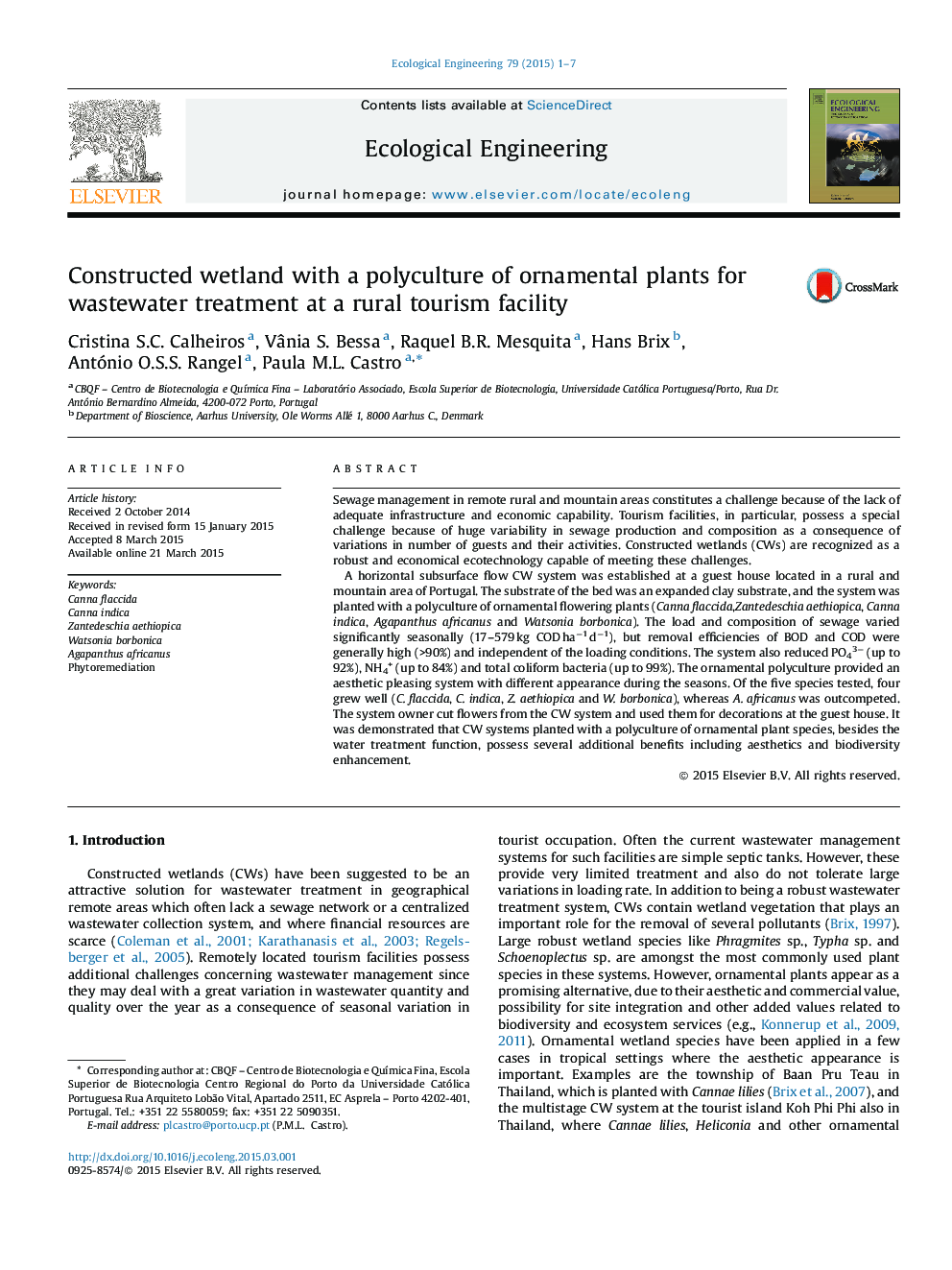| Article ID | Journal | Published Year | Pages | File Type |
|---|---|---|---|---|
| 4389112 | Ecological Engineering | 2015 | 7 Pages |
•CWs are a robust technology suitable for treatment of fluctuating wastewater loads.•A polyculture of ornamental plants enhances the aesthetic appearance of the CW.•Ornamental polyculture systems are effective for domestic wastewater treatment in CWs.•Removal efficiencies of up to 99% for COD (inlet: 20–1467 mg L−1) were achieved.•Consistent reduction of nutrients and coliform bacterial indicators.
Sewage management in remote rural and mountain areas constitutes a challenge because of the lack of adequate infrastructure and economic capability. Tourism facilities, in particular, possess a special challenge because of huge variability in sewage production and composition as a consequence of variations in number of guests and their activities. Constructed wetlands (CWs) are recognized as a robust and economical ecotechnology capable of meeting these challenges.A horizontal subsurface flow CW system was established at a guest house located in a rural and mountain area of Portugal. The substrate of the bed was an expanded clay substrate, and the system was planted with a polyculture of ornamental flowering plants (Canna flaccida, Zantedeschia aethiopica, Canna indica, Agapanthus africanus and Watsonia borbonica). The load and composition of sewage varied significantly seasonally (17–579 kg COD ha−1 d−1), but removal efficiencies of BOD and COD were generally high (>90%) and independent of the loading conditions. The system also reduced PO43− (up to 92%), NH4+ (up to 84%) and total coliform bacteria (up to 99%). The ornamental polyculture provided an aesthetic pleasing system with different appearance during the seasons. Of the five species tested, four grew well (C. flaccida, C. indica, Z. aethiopica and W. borbonica), whereas A. africanus was outcompeted. The system owner cut flowers from the CW system and used them for decorations at the guest house. It was demonstrated that CW systems planted with a polyculture of ornamental plant species, besides the water treatment function, possess several additional benefits including aesthetics and biodiversity enhancement.
